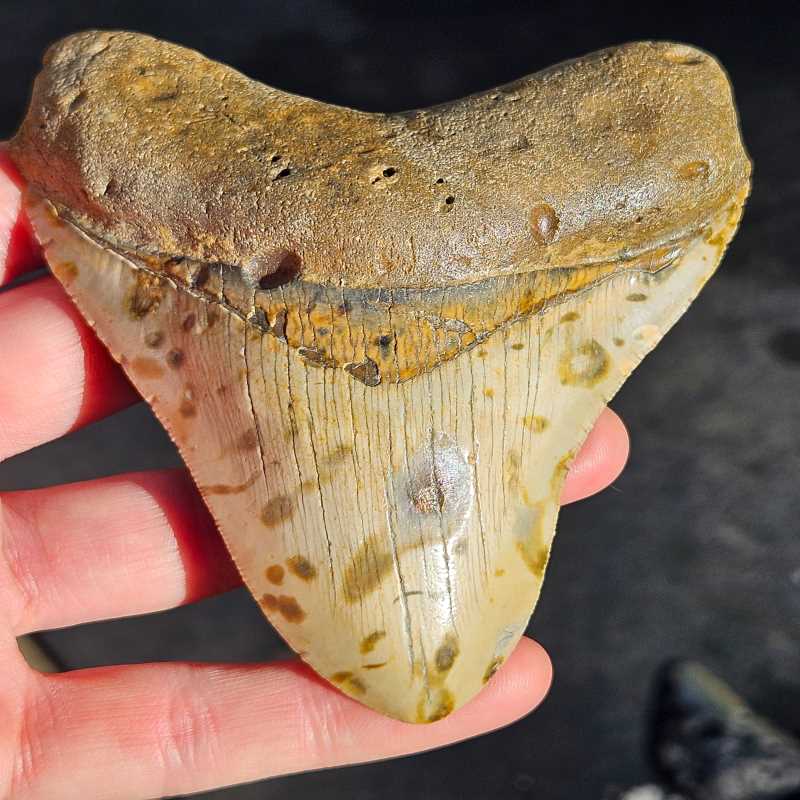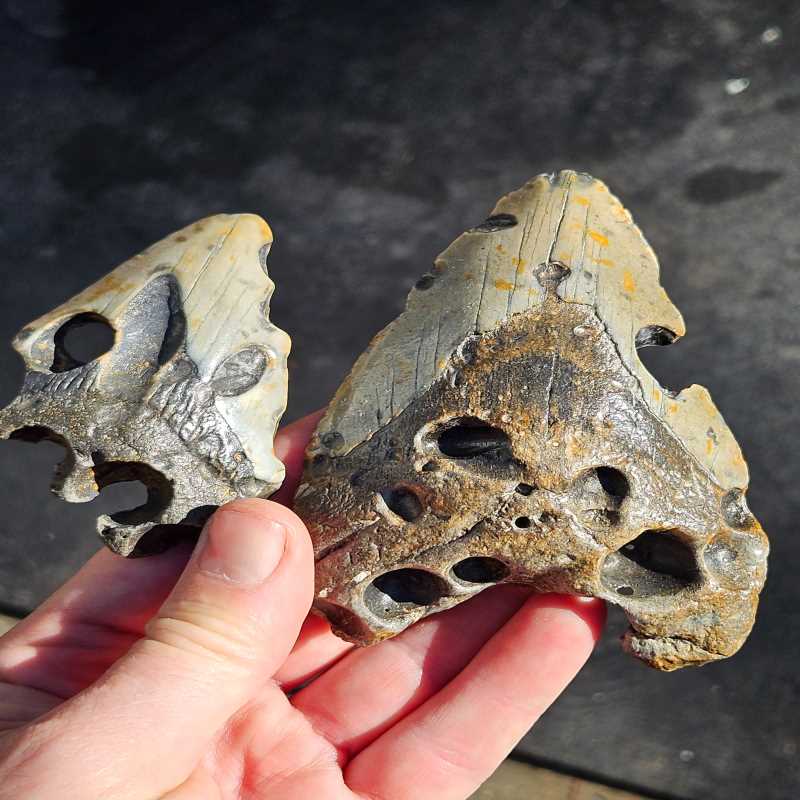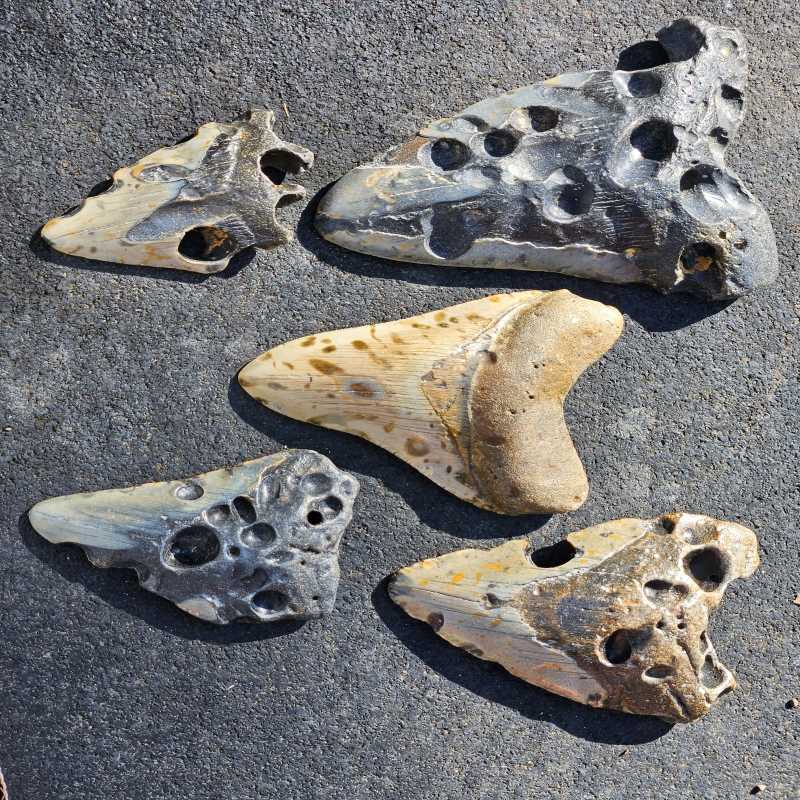Have a Question?
Why do Megalodon Teeth have Holes and Orange Spots
You may have seen shark teeth with holes in them or orange spots . These orange spots are created from various marine life that secrete a substance that is acidic and dissolves the calcium of the shark tooth enamel. Photo above
The deep holes that you see can be caused by various Marine life
- Moon snails (Naticidae): Moon snails are found in all oceans and seas, and they prey on a variety of bivalves, including clams and mussels. Moon snails use their sharp radulae to drill holes in the shells of their prey, and then they inject digestive enzymes into the holes. The enzymes dissolve the soft tissues of the prey, and the moon snail then consumes the liquefied tissues.
- Boring clams: Are found in all oceans, seas, lakes, and Rivers. They use a variety of methods to bore into different materials. Some boring clams use their strong shells to grind into material. While others use their foot to secrete a substance that dissolves material.
- Harp snails (Harpidae): Harp snails are found in tropical and subtropical oceans. They prey on a variety of invertebrates, including mollusks, crustaceans, and worms. Harp snails use their long, slender snouts to probe the substrate for prey. Once they find prey, they use their radulae to rasp away at the flesh.
- Whelks (Buccinidae): Whelks are found in all oceans and seas. They prey on a variety of invertebrates, including mollusks, crustaceans, and echinoderms. Whelks use their strong jaws to crush the shells of their prey, or they use their radulae to drill holes in the shells and then inject digestive enzymes.
- Murex snails (Muricidae): Murex snails are found in all oceans and seas. They prey on a variety of invertebrates, including mollusks, crustaceans, and echinoderms. Murex snails use their strong jaws to crush the shells of their prey, or they use their radulae to drill holes in the shells and then inject digestive enzymes.



